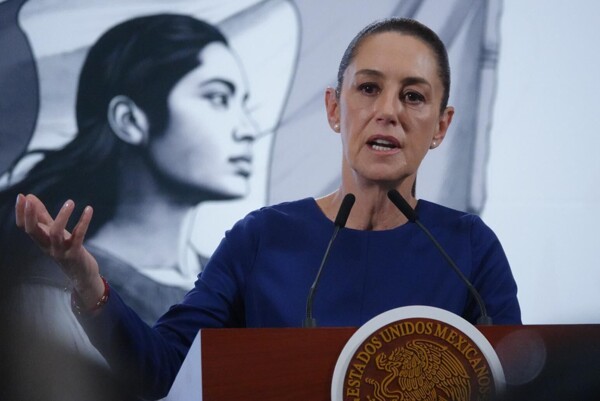The Mexican response to the protectionism of the United States laid the foundations for a more diversified economy. By 1935, the internal market led the recovery. The world learned that trade needs rules, predictability, and cooperation. History shows that extreme protectionism costs more than it protects, a lesson that remains as relevant today as it was almost a century ago.
Although Mexico's foreign trade was limited, its high dependence on raw material exports to the United States was the factor that caused great impact. Starting in 1932, Mexico broke with its economic orthodoxy. This was compounded by a conservative fiscal policy, with spending cuts and currency rigidity, which aggravated the internal recession. The crisis in Mexico was felt since 1929, with a GDP drop of 3.7 percent, according to the Historical Statistics compiled by INEGI. However, its effect was devastating, both for global trade and for economies closely linked to the United States, such as Mexico's.
There was a significant economic impact due to tariffs, both in Mexico and many other countries, resulting in a de facto global economic crisis known in history as the Great Depression. The lessons derived from it eventually led to the creation of GATT (General Agreement on Tariffs and Trade) years later, and more recently its transformation into the World Trade Organization (WTO). However, today the lessons seem to have been forgotten.
In Mexico, it precipitated a crisis, but also catalyzed a historic shift towards industry. Globally, it intensified the depression and hindered growth. More than 25 countries responded to the United States with the now-famous reciprocal tariffs, initiating a spiral of restrictions that collapsed global trade. Between 1929 and 1932, the value of world exports fell by 33 percent. It devalued the peso, allowed its floating, and encouraged an active policy of import substitution.
By making imported goods more expensive, national industry gained ground in consumer goods, reducing the participation of foreign products from 21 percent in 1929 to 9 percent in the following decade. This industrialist orientation consolidated during the 1940s to 1960s, in what became known as the "Mexican miracle," characterized by high growth rates, urbanization, and lower external dependence. These facts cannot be forgotten in the current context.
Mexico, then highly dependent on its oil and mineral exports, was one of the first countries to feel the effects of tariff barriers. Countries like Chile, Cuba, and Brazil, also reliant on commodities, suffered more severe declines than Mexico. In just two years, their sales to the United States fell to two-thirds of their 1929 levels. The impact was devastating: between 1929 and 1932, Mexican GDP contracted by just over 20 percent. Thus, a crisis imposed from outside forced a rethinking of the foundations of national economic growth.
The Smoot-Hawley Act not only harmed Mexico. These organizations were founded on the premise that free trade was better for everyone. In 1947, a total of 23 countries signed the GATT, the first major multilateral agreement to reduce tariffs and prevent trade conflicts. Incidentally, Mexico decided to join the GATT until August 1986.
Decades later, this framework would evolve into the World Trade Organization. By 1933, the world was mired in an unprecedented trade paralysis. The disaster left deep lessons. In 1930, the decline was accentuated, and the economy shrank by 6.6 percent. In 1931, it seemed the crisis had ended, with a GDP increase of 3.5 percent, only to precede the worst decline of all, that of 1932, when the downturn was 14.8 percent. Trade uncertainty and the collapse of bilateral trade left the country in suspense.
In 1929, the Bank of Mexico was founded. Even so, the lessons of the Great Depression were never forgotten: indiscriminate protectionism can be more destructive than any financial crisis.
The American protectionist reforms of the 1930s left a mark. In the following 13 years, the U.S. signed agreements with 29 countries, and its average tariff dropped significantly. Only towards the end of the last century did it fully embrace global integration. International trade, far from being a relief valve, became a collateral victim. This exacerbated the Great Depression by reducing income, slowing production, and multiplying unemployment. The country also moderately expanded public spending and took advantage of the rebound in silver and the discovery of new oil fields.
The Great Depression of the 1930s motivated certain political currents in the United States to adopt strong economic protectionism. The iconic Smoot-Hawley Act, passed in 1930, raised tariffs on more than 20,000 foreign products, hoping to protect its domestic economy. However, politically, in 1928, the period known as "El Maximato" began, with Emilio Portes Gil as president of Mexico, but with true power in the hands of the so-called "Jefe Máximo," Plutarco Elías Calles. This means that a new political system had not yet taken shape in the country, which largely occurred until the presidency of Lázaro Cárdenas, which began in December 1936.
This shift laid the groundwork for greater trade openness. The lesson from a near-universal disaster was learned. After World War II, the Allied powers wanted to avoid repeating the mistakes of the 1930s. In 1934, the U.S. reversed its course with the Reciprocal Trade Agreements Act, which allowed for bilateral tariff reductions. The goal: to shield the trade system from unilateral decisions that could plunge the world back into uncertainty. For much of the 20th century, the country maintained its model of protected industrialization.
This thus gestated a structural transformation towards a model of internal and industrial development. The protectionist offensive took the country during the process of building institutions. The textile, food, electrical, and cement industries grew under the new model. The "impoverish the neighbor" policy proved to be a recipe for disaster. Protectionism had paradoxical effects: by raising import costs, it contracted consumption; and by provoking retaliation, it reduced the market for exporters.













